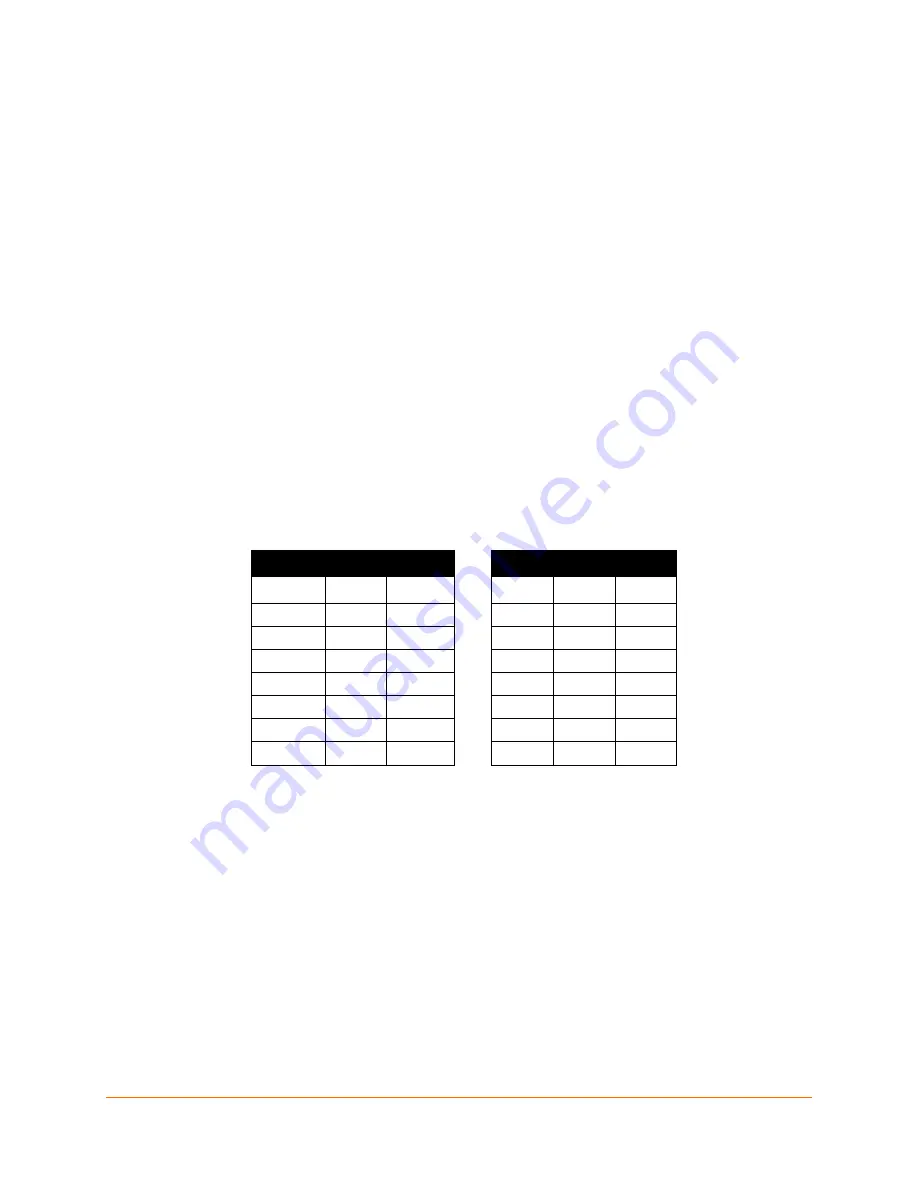
XPress™ DR+ Industrial Device Server User Guide
89
E. Binary to Hexadecimal Conversions
Many of the unit’s configuration procedures require you to assemble a series of options
(represented as bits) into a complete command (represented as a byte).
The resulting binary value must be converted to a hexadecimal representation.
Converting Binary to Hexadecimal
Following are two simple ways to convert binary numbers to hexadecimal notation.
Conversion Table
Hexadecimal digits have values ranging from 0 to F, which are represented as 0-9, A (for 10), B
(for 11), etc. To convert a binary value (for example, 0100 1100) to a hexadecimal representation,
treat the upper and lower four bits separately to produce a two-digit hexadecimal number (in this
case, 4C). Use the following table to convert values from binary to hexadecimal.
Table E-1 Conversion Table
Decimal Binary Hex
Decimal Binary Hex
0
0000
0
8
1000
8
1
0001
1
9
1001
9
2
0010
2
10
1010
A
3
0011
3
12
1100
C
4
0100
4
13
1101
D
5
0101
5
14
1110
E
6
0110
6
15
1111
F
7
0111
7
Scientific Calculator
Another simple way to convert binary to hexadecimals is to use a scientific calculator, such as the
one available on Windows’ operating systems. For example:
1. On the Windows’ Start menu, click
Programs
Accessories
Calculator
.
2. On the
View
menu, select
Scientific
. The scientific calculator displays.
3. Click
Bin
(Binary) and type the number you want to convert.


















